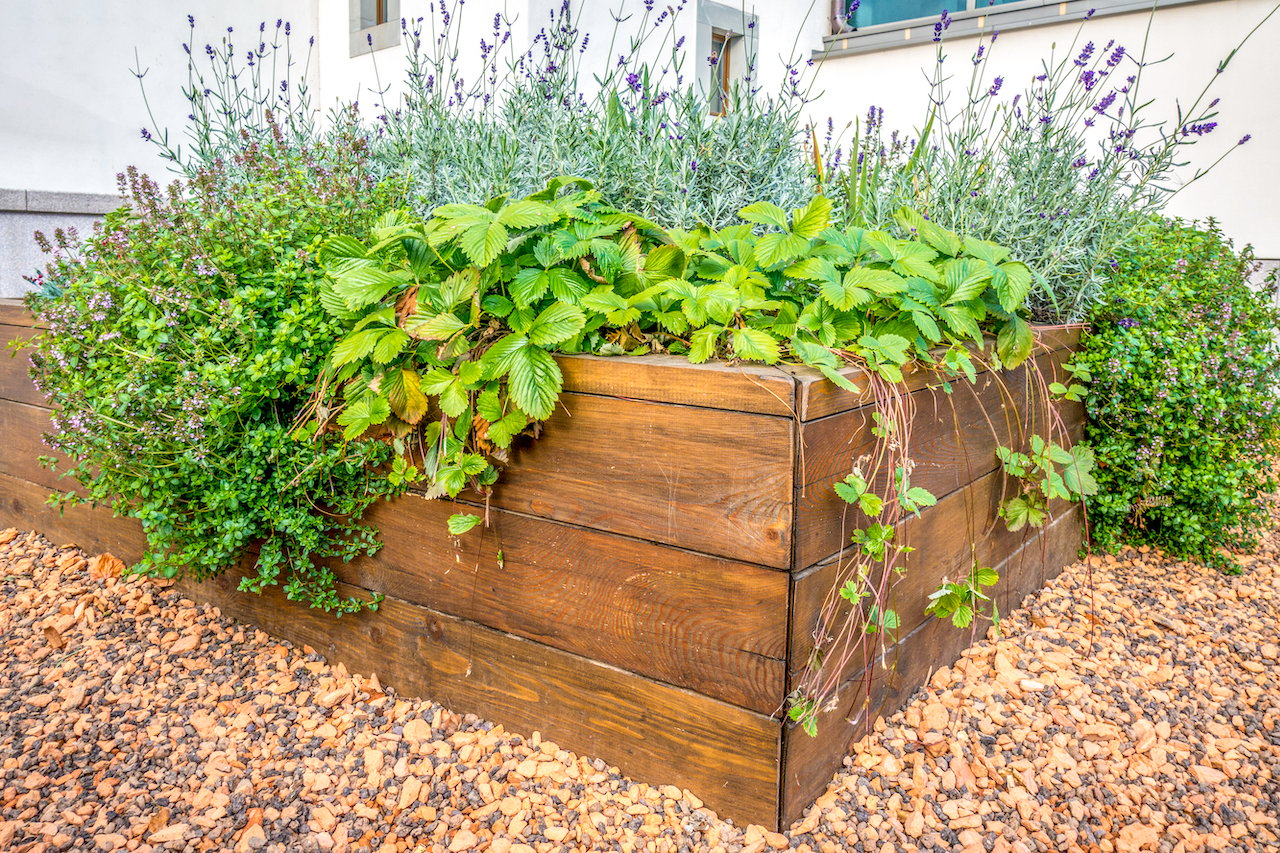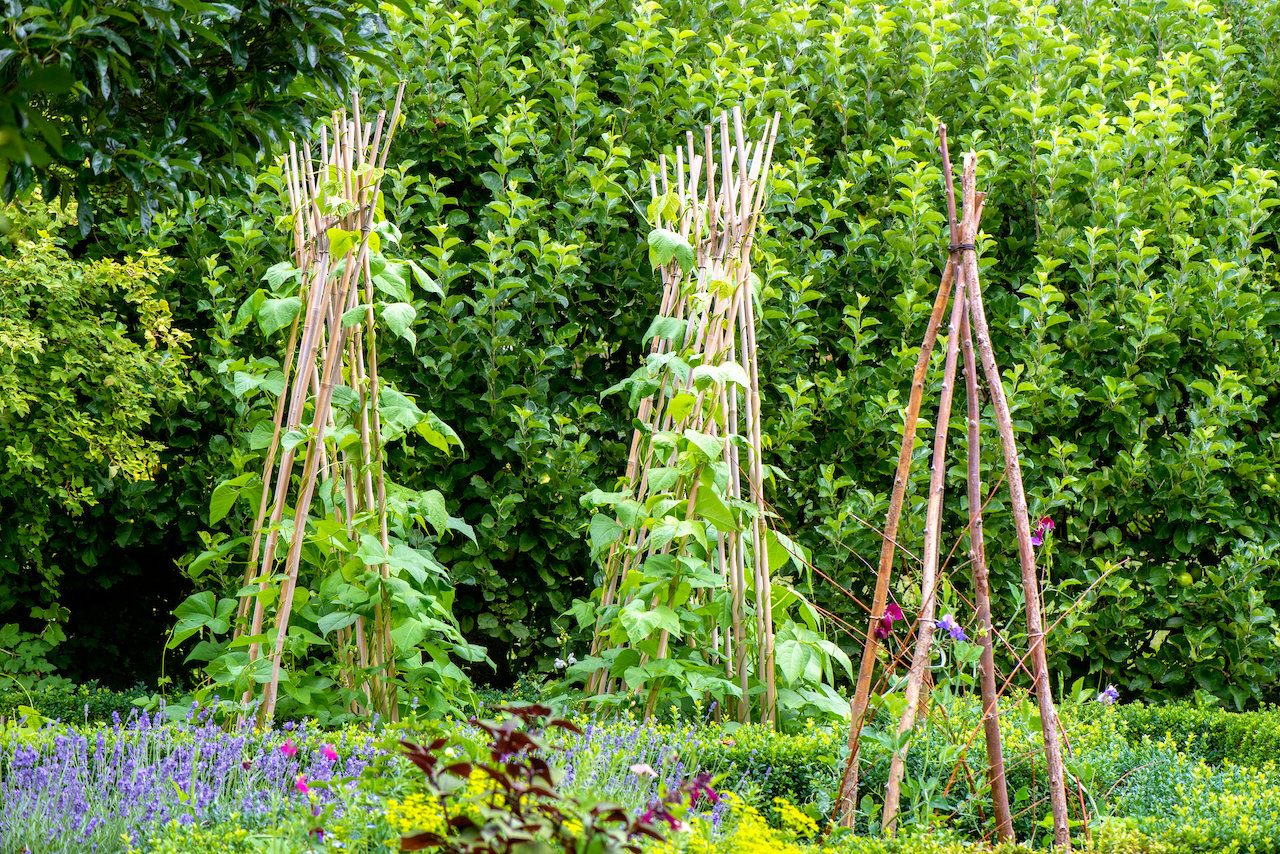How to Keep Your Pandemic Garden Blooming This Spring
Time to make a plan for gardening success


If you started a victory garden during the pandemic, chances are you had a few #fails as you tried your hand at growing veggies for the first time (don’t worry, we’ll never tell). Luckily, a new growing season is right around the corner, so you’re back and ready to up your gardening game this spring.
Why You Should Keep Growing Your Pandemic Garden
Like many people, you probably started growing a garden during the pandemic for a mix of a few reasons: to get outside, to start a new hobby, and to feel a sense of accomplishment when you hold a bundle of fresh veggies or flowers that you grew yourself.
And while things may look a bit different nowadays, all of those reasons still ring true. Many experts agree that gardening can help many of us deal with everyday stressors and even help support good physical health. And even with other aspects of your life getting busier, it’s always nice to have some quiet time playing in the dirt before you get on with the rest of the day’s activities.
There’s a reason why gardening remains a popular hobby, and if you started it in the last few years, that’s another reason to keep your garden growing. Like all hobbies and jobs, your skills will only improve over time. You’ll learn important lessons from a crop of zucchini that grows out of control or tomatoes that gets nibbled on by deer, and each year you’ll be able to grow a stronger and more diversified garden.
In that spirit, here are some simple, straightforward ways to garden smarter, not harder so you can maximize your harvest all the way up to the first frost.
Install a Raised Bed

If your fear of commitment or lack of time and materials prevented you from installing a raised bed last year, now’s the time! A raised bed will allow you to more efficiently optimize your soil while making it more difficult for rabbits to turn your broccoli into a buffet. You can build your own raised bed or pick up a kit at a garden center for under $100 or over $1,000 depending on size and materials.
Practice Succession Planting
Last year, you may have noticed your peas petered out by June while your squash didn’t hit its stride ‘til September. That’s because although they’re technically grown during the same growing season, some plants prefer cooler weather, while others crave hot temps.
To maximize your growing space, practice succession planting. Start cool-weather plants as soon as it’s safe to do so per the seed packet or plant tag, then remove them once they’ve stopped producing and replace them with something that prefers hotter weather. By late summer, you can even plant a second crop of many cool-weather veggies to enjoy again in the fall.
You can also plan your garden so you plant quick growers, such as greens and radishes, every week or so throughout the growing season to provide you with a continuous crop.
Plant a Perennial or Two
When you first started, your focus was probably on producing food quickly. But now that you’re gardening for the long game, you can experiment with planting perennial produce such as asparagus, rhubarb, and strawberries. They likely won’t have much output, if any, the first year or so, but you’ll reap the rewards of your patience next year.
Get Creative with Placement
Don’t limit your veggie-growing to just your plot. Think outside the box (literally) and look for ways to tuck in produce throughout your landscape. Craft a container garden filled with herbs (many of which produce pretty flowers mid-summer), fill bare spots with tomato and pepper plants, or even put vining plants such as zucchini at the front of a border. Trust us—your HOA will never notice.
Upgrade Your Gear

Now that you’re a full-fledged veggie gardener, it’s time to equip yourself with the tools you and your plants need to be successful. Consider upgrades like:
Powder-coated tomato cages and trellises that will last multiple seasons without rusting
A sturdy metal trowel that will allow you to dig with ease
Thick gardening gloves (no, the ones from last year with holes in them don't count)
A high-quality garden hose nozzle with numerous settings
An easy-to-use hose reel that doesn't create kinks
Plant a Pollinator Garden
In case you haven’t heard, keeping bees in business is not only good for your garden, it’s also good for the planet. Adding plants to your garden that help sustain pollinators, like bees, can be a great addition to your outdoor space this year. A pollinator garden can even help your veggies grow in tandem.
Figure out which types of plants are best for the pollinators in your area, and get digging. You can even designate a space specifically for these plants and watch the bees flock to your space.
Expand Your Gardening Horizons
Maybe you’re obsessed with filling your yard with gorgeous flowers or you stick strictly to making a bounty of vegetables for summer barbecues. If you haven’t ventured into other types of gardening and growing, this might be the spring to give it a try.
If you’re a floral devotee, start small with a planter box full of snow peas or lettuce. If you’re used to rows and rows of fresh food to harvest, try planting some native flowers around the perimeter of your yard or home. Switching it up can not only make your yard look more beautiful, but it can also help you uncover a gardening love you never knew you had.
Opt for Drought-Resistant Plants
It’s no secret that the weather can be unpredictable, and even in the spring, a few unseasonable hot days can cause some more fragile flowers to wilt. To decrease water consumption, and help promote a hardier garden, many are opting for drought-resistant plants that can do well even with more infrequent watering.
Of course, you’ll still need to water these plants, but this can help take some of the stress out of a heatwave, and help lessen the impact on your water usage. These may depend on your region, but try plants like lavender, California poppies, and lantana.
Make Use of Hardscape
Your gardening hobby doesn’t have to end where your backyard does. Sure, you’re probably pretty proud of the perfectly curated flowerbeds you created, but why should the lawn have all the fun? If you have a porch or balcony, try bringing some plants onto those surfaces as well.
Whether it’s in the form of a few potted plants from blooms you propagated from your garden or an herb garden outside of your kitchen window, bringing the garden to other parts of your outdoor space can be a new and fun way to keep your hobby going.





- Landscapers
- Tree Surgeons
- Gardening Services
- Landscape Architects
- Sod Installation
- Tennis Court Contractors
- Landscape Design
- Retaining Wall Companies
- Grading Companies
- Landscape Rock & Sand Delivery
- Mulch Delivery Services
- Pond Companies
- Artificial Grass Companies
- Shrub Removal & Trimming
- Backyard Design Companies
- Commercial Landscaping
- Koi Pond Services
- Backyard Landscapers
- Trampoline Assembly
- Hedge Trimming
- Pond Services
- Garden Design
- Outdoor Plant Watering
- Putting Greens
- French Drains
- Turf Installation
- Sod Removal Services
- Lawn Repair Services
- Brush Chipping Services
- Hardscape Contractor
- Landscape Rock Removal
- Plant Like a Pro: 9 Gardening Influencers Share Their Secrets to Growing Thriving Plants
- 11 Tips for Creating a Bountiful Backyard Garden
- 47 Landscaping Ideas to Consider for Your Home
- 21 Creative Garden Ideas for the Smallest Spaces
- Take Up Home Gardening This Year With Our Ultimate Introduction Guide
- 14 Creative Home Garden Ideas That Inspire
- How to Spruce Up Your Existing Garden by Adding New Plants
- 18 Low-Maintenance Landscaping Ideas
- 13 Ideas for Creating the Lush Backyard of Your Dreams
- 15 Tips to Help You Plan a Gorgeous Perennial Garden















